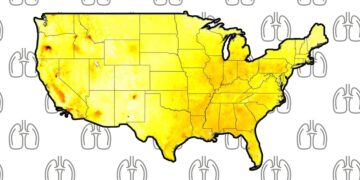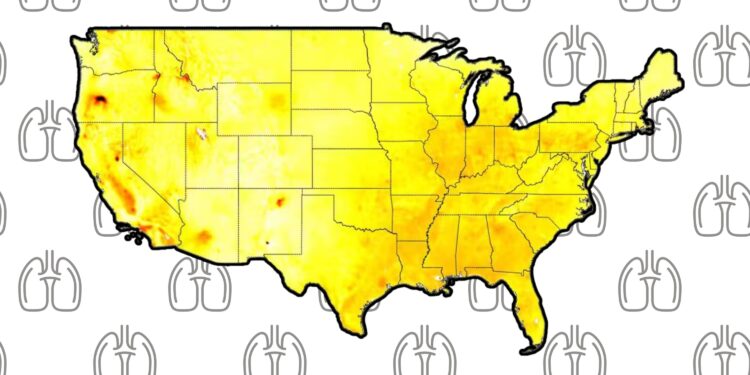Login to Continue Learning
California and Oregon are among the U.S. hotspots for dangerous submicron (PM1) air pollution—particles smaller than a micron or one millionth of a meter wide, according to new research from Washington University in St. Louis.
The researchers have been quantifying submicron particle levels across the country over the past 25 years. Data calculated based on known ratios of PM2.5 (particulate matter less than 2.5 microns) suggest that many eastern areas contain hotspots.
Due to their small size, PM1 pollutants can bypass the body’s defenses and cause even worse health effects. Parts of Arizona, California, Idaho, New Mexico, Oregon, and Texas show higher concentrations of submicron particulate matter on the researchers’ map, indicated by darker red areas.
Conversely, Colorado, Montana, Utah, and Wyoming have far fewer dark patches, suggesting lower levels of submicron particles. Arizona and New Mexico exhibit high concentration levels in some areas but much lower levels elsewhere within their states.
Higher PM1 concentrations were found in major urban and industrial areas and regions affected by wildfires, highlighting the role of combustion sources in producing harmful particles. This contrasts with the arid western states, which generally show lower concentrations.
The World Health Organization (WHO) suggests that 99 percent of the global population breathes air containing high levels of pollutants, exceeding WHO guidelines. Combined ambient and household air pollution are linked to 7 million premature deaths annually.
Exposure to particle pollution can cause heart attacks, irregular heartbeat, aggravated asthma, decreased lung function, and difficulty breathing, according to the Environmental Protection Agency (EPA).
Assistant research professor Chi Li, who led the study, notes that small particles often come from direct air emissions like black carbon from diesel engines or wildfire smoke. PM1 can also form through secondary processes involving sulfur dioxide or nitrogen oxides from fuel combustion and coal burning.
The dataset reveals a sharp drop in PM1 levels from 1998 to 2022, attributed to regulations such as the Clean Air Act of 1970.
For further information on science stories or air pollution questions, contact Newsweek at science@newsweek.com.
📚 Reading Comprehension Quiz
Which U.S. states are highlighted in the research as having higher concentrations of submicron particulate matter (PM1)?
Please login or register to take the quiz and earn points!



















